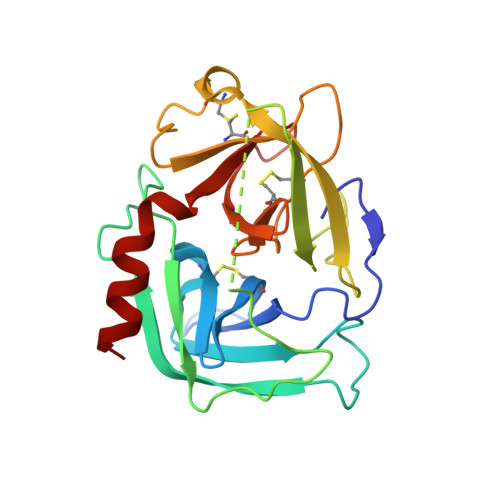Discovery of Potent, Selective Chymase Inhibitors via Fragment Linking Strategies.
Taylor, S.J., Padyana, A.K., Abeywardane, A., Liang, S., Hao, M.H., De Lombaert, S., Proudfoot, J., Farmer, B.S., Li, X., Collins, B., Martin, L., Albaugh, D.R., Hill-Drzewi, M., Pullen, S.S., Takahashi, H.(2013) J Med Chem 56: 4465-4481
- PubMed: 23659209
- DOI: https://doi.org/10.1021/jm400138z
- Primary Citation of Related Structures:
4K2Y, 4K5Z, 4K60, 4K69 - PubMed Abstract:
Chymase plays an important and diverse role in the homeostasis of a number of cardiovascular processes. Herein, we describe the identification of potent, selective chymase inhibitors, developed using fragment-based, structure-guided linking and optimization techniques. High-concentration biophysical screening methods followed by high-throughput crystallography identified an oxindole fragment bound to the S1 pocket of the protein exhibiting a novel interaction pattern hitherto not observed in chymase inhibitors. X-ray crystallographic structures were used to guide the elaboration/linking of the fragment, ultimately leading to a potent inhibitor that was >100-fold selective over cathepsin G and that mitigated a number of liabilities associated with poor physicochemical properties of the series it was derived from.
Organizational Affiliation:
Department of Medicinal Chemistry, Boehringer Ingelheim Pharmaceuticals Inc., 900 Ridgebury Road, Ridgefield, Connecticut 06877-0368, USA. steven.taylor@boehringeringelheim.com

















